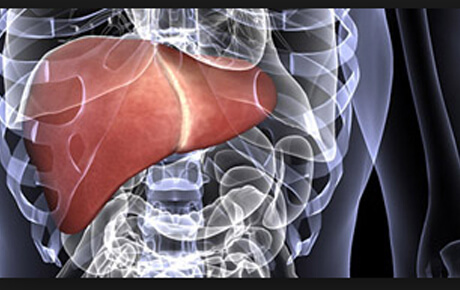

Radioembolization
Injection of radioactive microspheres to treat both primary and metastatic tumors, mostly applied in the liver
Tumor ablation therapies
Procedures that destroy tumors using various techniques such as radiofrequency ablation (radio waves), microwave ablation (extreme heat) or cryoablation (extreme cold)
Chemoembolization
Injection of chemotherapy drugs directly into liver cancer, used when the tumor is not responsive to treatment by surgery or by radiofrequency ablation (RFA)
Biopsy
The removal of sample of cells or tissue via a hollow needle to discover the presence, cause, or extent of a disease
The American Cancer Society reports that nearly 140,000 Americans are diagnosed with colorectal cancer each year, and half of those patients may see the cancer spread to their liver. Dr. Patrick Robbins, Interventional Radiologist with interest in Interventional Oncology at Anderson Regional Medical Center, is using an innovative form of radiation therapy called Selective Internal Radiation Therapy (SIRT) or Radioembolization as an alternative treatment for these patients.
SIRT is an option for patients who cannot undergo surgery or ablation because their tumors are too large or too numerous. In this minimally invasive procedure, millions of radioactive particles, each no bigger in diameter than a human hair, are delivered directly to the tumor through the bloodstream. Under X-ray guidance, a catheter is precisely guided into the blood vessels supplying the tumor(s). The particles block blood flow to the tumor(s), destroy the cancer cells, and shrink the tumor, usually leaving the surrounding healthy tissue relatively unharmed. In most cases, the procedure is well-tolerated and patients go home the next day.
Dr. Robbins, Interventional Radiologist, said, “Over the last ten to fifteen years, radioembolization for advanced disease such as metastatic colorectal cancer has given patients a viable treatment option – where very few options previously existed. Recently, the National Comprehensive Cancer Network (NCCN) guidelines have been updated to show the widespread nationwide support for this therapy, and research over the next few years will focus on Radioembolization for multiple other types of tumors that have spread to the liver. I chose to come to Meridian to build on the foundation of excellent cancer care already established, and I am happy to now offer this advanced therapy to patients in this area.”
Over the years, the three typical methods for treating cancer have included surgery, chemotherapy and radiation. In the past 15 years, interventional radiology has continued to offer multiple minimally invasive image guided treatment options for patients. Dr. Patrick Robbins, Interventional Radiologist with special interest in Interventional Oncology, specializes in procedures that directly target tumors in minimally invasive procedures.
While some bone, liver, kidney and lung lesions can be removed surgically, many are inoperable and must be addressed using an alternate approach or combination of therapies. That’s where microwave ablation comes into play as the newest tool in the interventional radiology tool kit at Anderson Regional Medical Center.
During an ablation procedure, a small probe is inserted through the skin, guided to the target lesion, and the probe location is confirmed with imaging. Electromagnetic waves are delivered from the ablation system through the probe, heating the target area and destroying the tissue. When the ablation is complete, the physician slowly removes the probe and places a small bandage over the site of the insertion. The procedure time ranges from one to two hours, with only five to ten minutes of active microwave ablation times. Many patients leave the hospital the same or following day.
©2024 Copyright | Website Privacy Policy | Digital Marketing by Authority Solutions®